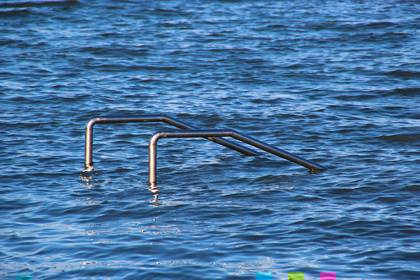

 Dr D Kumar
Dr D Kumar

Recently Dubai saw extreem flooding caused by intense rainfall.Many humans and animals suffered including loss of life.Rapid climate change and massive urabanisation has agrevetated the harmful results of this extreme rainfall. Warmer air can hold more moisture and creat heavier clouds.Before the recent flooding,the tempreture of sea around Dubai was warmer because of gloobal warming.The warmer air over sea caused higher evaporation of this warmer sea water.The warmer air in upper layer held higher amount of moisture.The colder air in upper reaches of atmosphare caused situation for thunderstorm which in turn caused extream rainfall in short duration in Dubai.
Dubai, a rapidly growing metropolis, has undergone significant urbanization in recent decades, leading to extensive infrastructure development. While this rapid urbanization has brought economic growth and prosperity to the region, it has also presented challenges, particularly in managing water drainage during periods of heavy rainfall.
One of the primary factors contributing to localized flooding in Dubai is the strain placed on drainage systems due to rapid urbanization. As the city expands and new developments emerge, impermeable surfaces such as roads, buildings, and pavements replace natural vegetation and soil. These impermeable surfaces prevent rainwater from infiltrating into the ground, increasing surface runoff.
In low-lying areas or regions with inadequate drainage infrastructure, the accumulation of rainwater can overwhelm existing drainage systems, leading to flooding. Drainage systems, including stormwater drains, culverts, and canals, are designed to channel rainwater away from populated areas to prevent flooding. However, the capacity of these systems may be insufficient to handle the increased volume of runoff generated by urbanization, especially during intense or prolonged rainfall events.
Moreover, as urbanization progresses, the natural landscape is altered, leading to changes in surface topography and the loss of natural water retention areas such as wetlands and natural drainage basins. These changes further exacerbate the challenges associated with managing stormwater runoff and increase the risk of flooding in vulnerable areas.
Specific areas in Dubai where these challenges are particularly evident include:
1. Al Quoz:Al Quoz is a densely populated industrial and residential area in Dubai characterized by extensive urban development. The rapid expansion of industrial facilities, commercial establishments, and residential complexes has led to increased impermeable surfaces, reducing the area available for natural water absorption. As a result, heavy rainfall can lead to localized flooding in low-lying areas of Al Quoz.
2. Satwa:Satwa is a neighborhood located in western Dubai, known for its mixed-use development and high population density. The area has experienced significant urbanization in recent years, with the construction of high-rise buildings, commercial centers, and residential complexes. The limited availability of green spaces and natural drainage channels makes Satwa susceptible to flooding during periods of heavy rain.
3. Deira:Deira is one of the oldest commercial districts in Dubai, situated along the northern coastline of the city. The area has undergone extensive urban redevelopment, including the construction of skyscrapers, shopping malls, and residential towers. The rapid urbanization of Deira has resulted in the loss of natural drainage pathways and increased surface runoff, contributing to flooding in low-lying areas, particularly during the monsoon season.
4. Jumeirah:Jumeirah is a coastal residential area known for its luxury villas, hotels, and beachfront properties. The area has experienced rapid urbanization and land reclamation projects, altering the natural shoreline and coastal dynamics. During periods of heavy rainfall or storm surges, inadequate drainage infrastructure in certain parts of Jumeirah can lead to localized flooding, impacting both residents and businesses.
In conclusion, Dubai's rapid urbanization has placed strain on drainage systems and increased the risk of flooding in low-lying areas or regions with inadequate infrastructure. Addressing these challenges requires comprehensive urban planning strategies, including the implementation of sustainable drainage solutions, preservation of natural water retention areas, and investment in resilient infrastructure to mitigate the impacts of extreme weather events.